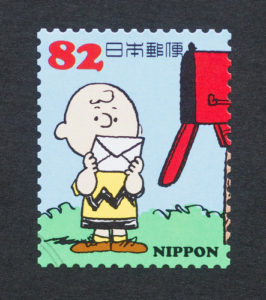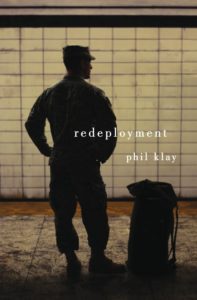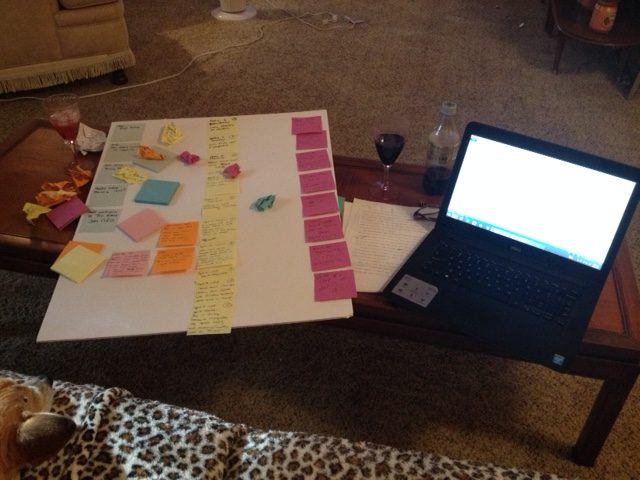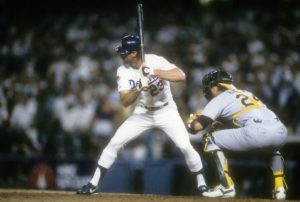by Larry Brooks 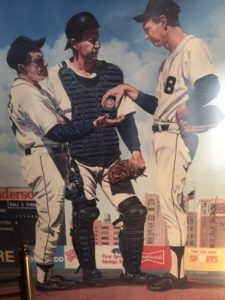
A cynic—probably not an experienced writer in this case—might offer this simple explanation: Well, that’s easy… the stories that get considered are the stories that work.
Sure kid, says the old geezer to the kid with the baseball glove… you want to pitch for the Yankees? Well, that’s easy, just crank up your fastball to 96 miles an hour and paint the black with consistency, and throw in some off-the-table breaking balls to keep ‘em honest… that’s all you need to do.
If you’ve ever played or watched the game, you know how naïve that is. And yet, with writing, far too many new writers, and even some writing teachers, advocate exactly the same clue-light approach.
It reminds me of an old Steve Martin joke: Want to know how to avoid paying taxes on a million dollars? Simple. First, you get a million dollars. Then…
Laughter ensures from those who get the joke. Those who don’t are left hanging in the silence of that imcomplete sentence, already lost.
There are too many writers out there who, relative to craft, don’t get the joke.
Best writing advice ever: never stop learning.
In his Killzone post yesterday, Jim Bell advised us to never back away from studying the craft of writing. Very powerful wisdom, that.
Here’s a subtlety to it: craft is the prerequisite to getting into the game at a professional level. With some odd exceptions (which the cynics latch onto like flies, thus inviting you to play the lowest possible odds in the writing game), nobody ever published a novel that didn’t exhibit some workable degree of storytelling craft (the lack of which is what gets you rejected).
Without it, your story won’t get through the door to the audition room. Agents will pass. Editors will fire off templated rejection slips after reading ten pages. Too many of the writers left out in the rain, wondering why their stories don’t work, haven’t yet encountered enough craft to understand why.
But we aren’t playing merely to get into the audition room.
If that’s your goal, you’re not shooting high enough.
Once inside this figurative audition room, things get even tougher. Because while there are stories out there that are fully-formed and cover all the bases… there is the occasional story that really works. That soars above the others on multiple levels.
And that’s the one they’re looking for.
The criteria for simple completion (enter NaNoWriMo if this is your only goal) is the same for both—in much the same way that every player invited to a pro tryout has a professional-level command of the game they are playing (trust me, because I’ve been there, the guys pitching in the minor leagues throw every bit as hard, and the home runs travel every bit as far, as the guys playing in the major leagues); the punchline is that only a fraction of them will go home with a contract.
You want to be the writer who goes home with a contract.
But beyond simply being considered, in writing the criteria for greatness is found in nuance, details, and the artful application of emotional storytelling power.
Which leaves us with this truth: it is the degree of comprehension—leading to, in rare cases, an elevated story sensibility—applied powerfully and artfully to a story, that separates the complete from the astonishing.
And thus, defines the difference between them.
Every professional in every arena operates from this perspective. They are striving to be the best, not simply to get a seat on the bus.
I know, get it… when you are one of those writers out in the rain (believe me, I have a closet full of umbrellas myself), a seat on the bus seems like success itself. For the time being, it seems like enough.
But trust me on this, once you get there, you’ll want more.
Here’s the rub: the criteria for breaking in, and then, once published, breaking out (elevating above the midlist into the front window of the bookstore) is exactly the same. It is driven by identical standards and elements and essences of craft.
Agents and editors are looking for home runs. Not just another book to take up space on the B&N rack.
Which means that, as you sit alone at a desk hoping to write a story that will land you an agent that will land you a good publisher who will propel you onto a bestseller list… know that David Baldacci is sitting alone in his writing space working toward the very same end-game criteria and qualitative height that you aspire to.
The only difference, beyond the certainty that he will publish the book he’s working on, may be that he knows the focuses and benchmarks of craft and all its corners and nuances better that you know them.
But—this being the good news, the best news ever—you can fix that, over time.
The point of all of everything we do and learn as writers, stated simply, is to elevate the nature and power of our story sense.
Call it talent, if you prefer. Either way, it’s discerning a killer idea from a vanilla one, and knowing what goes where in the story, and why, to what degree and in what form, better than the other guy… or at least, at a high enough level to earn the respect and shock and awe of all who will read your story.
It’s knowing when and how to break the rules, rather than breaking them without an informed context that rationalizes doing so.
Talent is nothing other than a command of craft to an extent that it informs one’s story sensibilities.
Consistently successful authors, as well as those who break into the business in a big way, have all got it where story sense is concerned. (A caveat here, especially with newly successful writers, is that the book in question may have taken years of work and craft-building before it reached a break-in level of quality.) When you seek to understand what “it” is—a quest that you, as a new writer, absolutely should commit to—you will discover that “it” begins, grows from and depends on, a foundational context built upon the core, imprecise yet inflexible, universal principles of storytelling craft.
If you know what those are, keep going. If you don’t, stop writing and begin studying. Writing is practice and application… both of which require a base of knowledge from which to draw.
Some might wonder what principle-driven story sense even means.
And yet, it’s all out there, waiting to help you raise your game.
Jim Bell breaks the craft of storytelling down into seven primary categorical buckets (with several terrific books that deliver a deep dive into all of them):
1. Plot, 2, structure, 3) characters, 4) scenes, 5) dialogue, 6) voice, and 7) meaning (or theme).
This covers it nicely.
In my work as a writing teacher/speaker/practitioner, I break it all down into 12 categorical buckets (with three bestselling writing books that do the same):
1) concept, 2) premise (they are different essences; the sum of the two equals plot), 3) character, 4) theme, 5) structure, 6) scene execution, 7) voice, 8) dramatic tension, 9) optimal expositional pacing, 10) vicarious experience, 11) hero empathy (rootability) and 12) narrative strategy.
Randy Ingermanson, author of “Fiction Writing for Dummies,” packages it all within a model called The Snowflake Method, and guess what: it’s the same principles.
Because there really isn’t a variation to be found among people who know what they’re talking about.
There isn’t even a shred of contradiction, and very little variance, in these approaches. Each covers the full roster of the craft we are pursuing. You’ll notice that my list adds the forces that make a story better… and yet, those same forces reside at the core of the elements we have in common, as well.
The enlightened writer will be exposed to and engage with craft in all its various presentations.
When you experience these messages from a variety of credible sources (the person leading your critique group… maybe, maybe not), you’ll soon see the commonality and the overlap. Craft is craft… you don’t get to make it up as you go, and it isn’t different from teacher to teacher, even when the parts are labeled differently.
When you get it you’ll see that it’s the same basic core principles being examined and applied, every time. And that it’s the same stuff that all those famous authors and screenwriters you admire are using… and when rendered from an evolved sensibility driving it all to the page, it is what has made them famous in the first place.
Craft awaits you.
It’s like gravity… it doesn’t care what you call it. Yet it governs all that you do… just as it governs all that the nay-sayers do… and it will kill either of us if we forget to respect it.
 For those of us who still work (or aspire to work) in the land of traditional publishing, we all encounter rejection at some point. Most published authors get turned down by numerous agents and editors on the road to publication. Learning to deal with “No” is part of the writing process—I’d even say it’s one of the most important parts. You have to be able to handle rejection to stick with writing long enough to get better. And let’s face it: when we’re starting off as beginners, most of us have to become better writers in order to produce anything publishable. Agent, editors: those traditional publishing gatekeepers may be the dreaded Gorgons who spew fiery “No!” in boilerplate missives, but they have traditionally served a vital function. They force us to improve our writing.
For those of us who still work (or aspire to work) in the land of traditional publishing, we all encounter rejection at some point. Most published authors get turned down by numerous agents and editors on the road to publication. Learning to deal with “No” is part of the writing process—I’d even say it’s one of the most important parts. You have to be able to handle rejection to stick with writing long enough to get better. And let’s face it: when we’re starting off as beginners, most of us have to become better writers in order to produce anything publishable. Agent, editors: those traditional publishing gatekeepers may be the dreaded Gorgons who spew fiery “No!” in boilerplate missives, but they have traditionally served a vital function. They force us to improve our writing.

